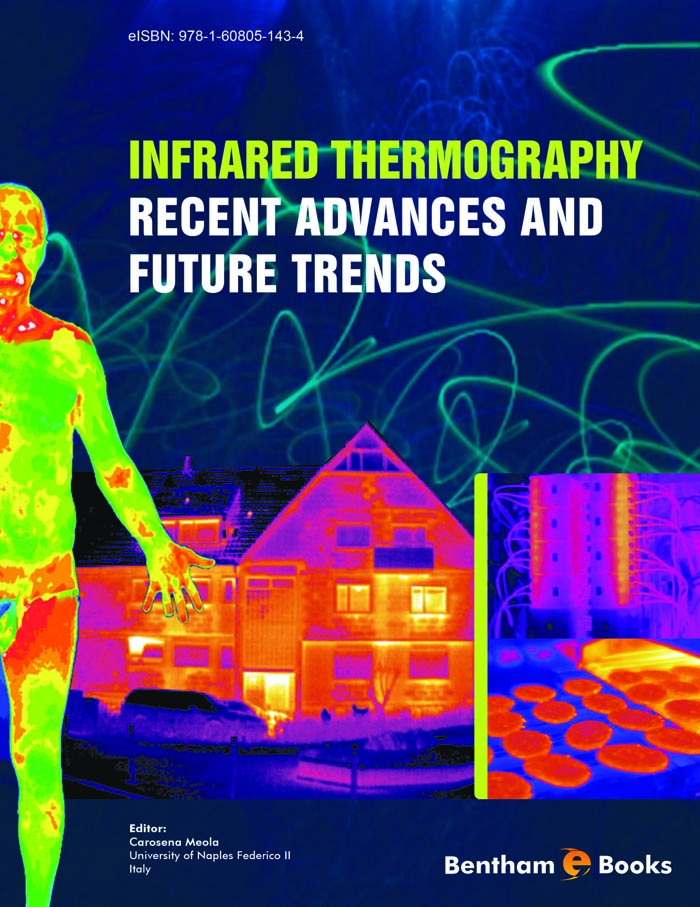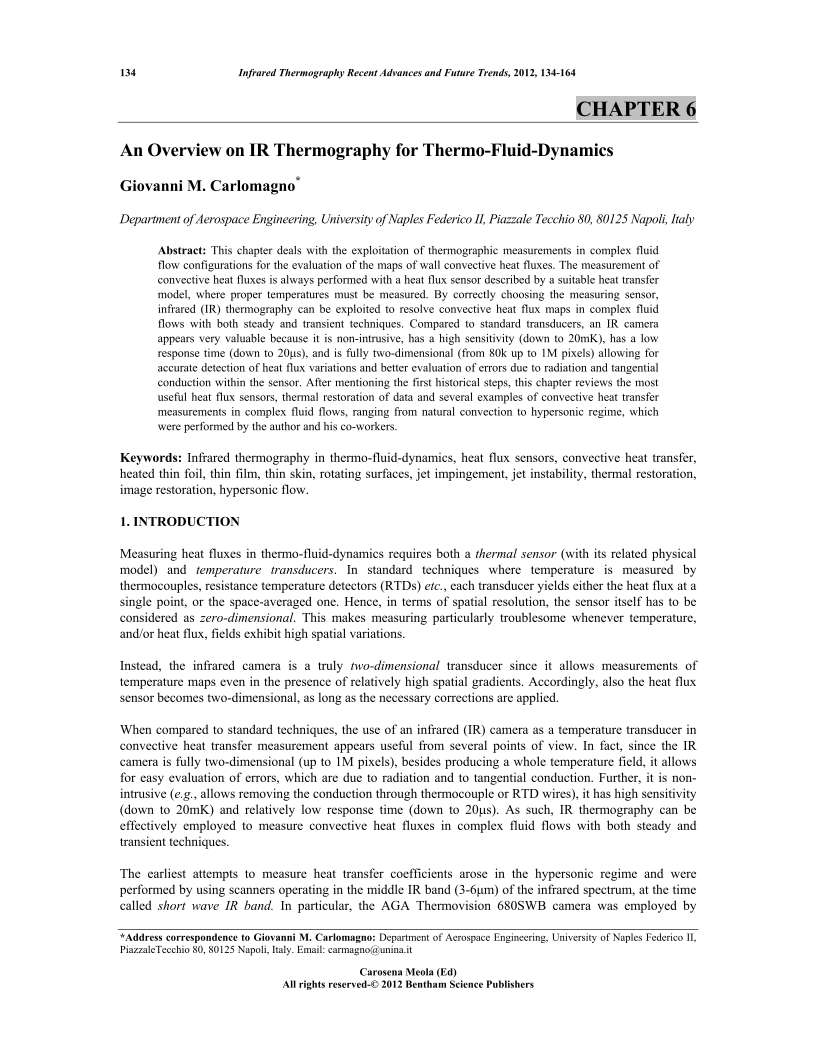An Overview on IR Thermography for Thermo-Fluid-Dynamics

- By Giovanni M. Carlomagno1
-
View Affiliations Hide Affiliations1 Department of Aerospace Engineering, University of Naples Federico II, PiazzaleTecchio 80, 80125 Napoli, Italy
- Source: Infrared Thermography Recent Advances and Future Trends , pp 134-164
- Publication Date: July 2012
- Language: English
An Overview on IR Thermography for Thermo-Fluid-Dynamics, Page 1 of 1
< Previous page | Next page > /docserver/preview/fulltext/9781608051434/chapter-6-1.gif
This chapter deals with the exploitation of thermographic measurements in complex fluid flow configurations for the evaluation of the maps of wall convective heat fluxes. The measurement of convective heat fluxes is always performed with a heat flux sensor described by a suitable heat transfer model, where proper temperatures must be measured. By correctly choosing the measuring sensor, infrared (IR) thermography can be exploited to resolve convective heat flux maps in complex fluid flows with both steady and transient techniques. Compared to standard transducers, an IR camera appears very valuable because it is non-intrusive, has a high sensitivity (down to 20mK), has a low response time (down to 20μs), and is fully two-dimensional (from 80k up to 1M pixels) allowing for accurate detection of heat flux variations and better evaluation of errors due to radiation and tangential conduction within the sensor. After mentioning the first historical steps, this chapter reviews the most useful heat flux sensors, thermal restoration of data and several examples of convective heat transfer measurements in complex fluid flows, ranging from natural convection to hypersonic regime, which were performed by the author and his co-workers.
-
From This Site
/content/books/9781608051434.chapter-6dcterms_subject,pub_keyword-contentType:Journal -contentType:Figure -contentType:Table -contentType:SupplementaryData105

